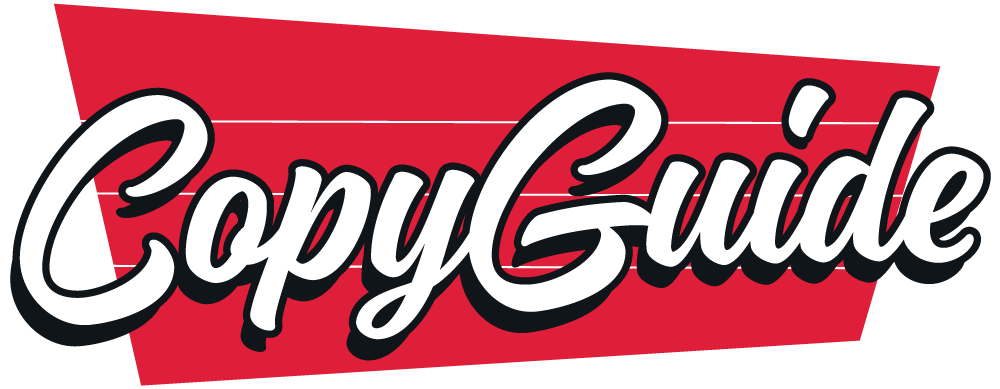Just like any other form of writing, video script copywriting takes time and practice. Some of the skills you've learned in your regular content work will transfer – but a lot of them won't.
The first time I tried to write video script copy, I thought I had it all worked out. Catchy introduction, point-proof, point-proof, conclusion! Just like all of those presentations I gave in high school.
Boy, was I wrong.
The script would have done fine as a regular blog post, but as soon as I hit “record” and gave it a test run, all of that carefully crafted copy went out the window.
I stumbled over challenging word combinations, lost my place in long, boring sections, and worst of all failed to deliver the message I had so carefully prepared. It's a good thing I hadn't handed it directly to the client!
It was then that I realized just how different script work can be from regular copywriting.
Just like any other form of writing, video script copywriting takes time and practice. Some of the skills you've learned in your regular content work will transfer – but a lot of them won't.
The thing is, you're not just trying to rank high in search results or land a solid email open rate. With video, you need to get them and keep them.
So how do you write a high-converting video script? Well, you're in luck, this isn't my first rodeo. After that first fail, I worked hard on my video copywriting skills and can confidently guide you through a few tried-and-tested formulas to make sure your script keeps the viewer engaged the whole way through.
How to Write A Video Script: 3 things to consider

Before we go too far, let's take a look at a few things that we need to keep in mind. After all, this is video we're talking about — a visual medium. Here are the three biggest things you need to remember:
It’s about more than words
When you sit down to write a script, the first thing you need to do is think about the visuals. This means considering things like shots, angles, backgrounds, and any other type of visual movement or effect that is going to help tell your story.
A great way to get started is by sketching out a quick storyboard of what you think the video could look like. This doesn't have to be anything fancy--a few simple stick figures will do the trick. Just map out what's happening and when.
If you’re a freelance copywriter, this might be informed by the client. So make sure that you ask for an example of the material if it’s already recorded, or talk to them about the style that they want to achieve.
You need a strong hook
Remember how we talked about keeping viewers engaged? A large part of that is making sure that you have a strong hook at the beginning of your video. This could be anything from an interesting statistic to a personal anecdote.
The first 30 seconds of a video is crucial, and without doing it right, you can lose the vast majority of your audience.
Brevity is key
When it comes to video scripts, less is almost always more. No one wants to sit through a 10-minute commercial, so don't try to cram too much information into your script. A talking head droning on, even about the most exciting thing in the world, won’t be enough to keep people watching.
Instead, focus on delivering one clear message and make sure that your entire copy strategy supports that.
If you need to, break down your script into smaller sections and focus on one thing at a time. This will make it easier for both you and the viewer to digest.
All of these factors will play into how you approach writing your script.
Video script copywriting formulas

Now we get to the meat of the thing. You don’t have to just stare at a blank screen and come up with a script from scratch every time. There are some helpful formulas and templates to get you started, especially if you’re just learning the medium.
Template 1: Problem-Agitate-Solve (PAS)
The PAS formula is a great way to structure a video that’s going to be selling a product or service. You start by identifying the problem your viewer has, then agitating it by showing what would happen if it didn't change, and finish with your solution.
How to do it:
Even if you didn’t recognize it, you’ve seen hundreds if not thousands of PAS advertisements in the past. It can be quite simple.
- Problem: “Do you have difficulty falling asleep at night?”
- Agitate: “Worried you’ll sleep through your alarm?”
- Solve: “Our natural sleeping pills will let you head off to dreamland as soon as your head hits the pillow.”
Now, most videos aren’t going to be just three lines long, so you'll have to learn where and how to pad out each section. The key with PAS is to make sure each section flows into the next and that you don’t get too bogged down in any one area. You want to keep it light so the viewer doesn't get overwhelmed and tune out.
Why it works:
This formula is super effective because it's relatable. We've all been there, up late at night trying to sleep and already worrying about the next day. By agitating that problem, you create a sense of urgency that will push your viewer toward your solution.
Template 2: Star-Story-Hook (SSH)
You might be looking at this title and thinking, "wait, doesn't the hook go at the beginning?" Let me explain. In video, you don't always need that catchy slogan right off the bat. Sometimes it can just be introducing a character that is immediately likeable or has all the things you want for yourself.
By working backward, and showing the way they got there, you'll keep viewers waiting with bated breath to learn the secret of their success.
How to do it:
It doesn’t need to be a movie star or a glamour model, just someone that is already experiencing the benefits that your customers need.
- Star: Mary is making $75,000 from home without even putting in 40 hours a week.
- Story: She found out about this easy business that she could do in her spare time, and it quickly took off.
- Hook: You can be just like Mary, earning money on your own terms. All you need is a computer, the internet, and this once-in-a-lifetime opportunity.
People are so used to watching their favorite personalities online that they might not even recognize that they’re being sold a product.
Why it works:
Showing someone's life story engagingly is a tried and true method of holding someone's attention. It also doesn't require a lot of flashy effects or special equipment to pull off, but can immediately secure buy-in from the viewer.
Example:
Advil opens their video with a smiling birdwatcher enjoying the outdoors — something the company’s target audience could likely relate to. Then they double back, showing how the birdwatcher injured himself and used Advil to keep enjoying his time outside. This makes for a very short (just 15 seconds) and powerful ad.
Template 3: Features-Advantages-Benefits (FAB)
In this formula, you start by listing out the features of your product or service. Think of features like ‘traits’ — they’re part of your product. For example, weekly reports might be a feature of project management software.
Then, for each feature, you add what advantage it offers the user. This is where you describe what the product actually does for the user. Using the project management report example again, this might involve talking about all the important information that the user will get.
Finally, sum up each advantage as a benefit to the user. This means describing how the product will actually impact your customers’ lives. It answers the question: “Why should I care about what you’re offering me?”
How to do it:
It might look something like this:
- Feature: Our product is made with all-natural ingredients.
- Advantage: This means that it's better for your health.
- Benefit: You can feel good about using our product without worrying about the negative health effects of synthetic ingredients.
This can be helpful when you have a lot of product features to talk about and want to make sure you're emphasizing the benefits to the user.
Why it works:
The key here are the benefits; things that people might not even know they were longing for. By covering the features, advantages and benefits you’ll also be helping the audience appreciate the value of your offer in a deeper way.
Example:
In this ad from the Rocky Mountain Soap Company, the product might be a new all-natural laundry detergent. The customer may not have known that there were negative health effects associated with using synthetic ingredients, but once you tell them, they can understand the true value of your product.
Template 4: Before-After-Bridge (BAB)
This formula emphasizes a world that doesn't include the customer's biggest problem. It helps transport them to what their life might be like if only this one little thing was taken care of.
How to do it:
The key here is an effective use of the before and after. You want to make sure the before is relatable but not too much so. It should be a problem that most people in your target market face, without being too specific to any one person's story.
The after should be aspirational without seeming out of reach. It's important to remember that even if you're solving a very specific problem, you're ultimately selling a feeling more than anything else.
You'll also want to make sure your bridge is airtight. This is the section where you make the connection between the before and after worlds and show how your product or service is the key to making that transition.
Here's an example of this formula in action:
- Before: You're stuck in a job you hate, going through the motions day in and day out.
- After: Imagine waking up and being excited to go to work every morning.
- Bridge: Take the leap and start searching for your next career today–with our help.
This formula is best used for explainer videos or product overviews where you want to focus on solving a problem for the viewer.
Why it works:
When you give people a chance to see what their life could be like without their current problem, it's much easier to get them on board with your solution. The before and after contrast also makes it easy to follow along and understand how your product fits into the equation.
Example:
In the following video from LA Fitness, we see BAB in full action. The protagonist starts sad, lonely, and down-in-the-dumps. By the end, she’s bright, smiling, and social. Through intelligent use of framing, LA Fitness is positioned as her “comeback,” and the entire story is told in just a few seconds.
Template 5: String of Pearls
Still with me? That’s because of this formula called “string of pearls.”
It’s a storytelling technique that goes back centuries, and for good reason. It works. You can use it in any kind of video where you want to keep the viewer engaged for more than just a soundbite.
How to do it:
Ever clicked on a video called “TOP-10 WAYS TO GET SAND OUT OF YOUR BATHING SUIT (AND OTHER PLACES)!” Of course you have (spoiler: we all have). Sand gets everywhere.
You string together a series of short scenes or snippets, each one highlighting a different benefit, feature, or selling point. In between these scenes, you have a character, typically the spokesperson, connect the dots for the viewer by adding a short explanation or story.
Why it works:
There’s something in us that just wants to judge a list, so we stay to the end to make sure it’s in the right order. Even if it’s not on a topic you were all that interested in, you might just keep watching to see which way is best (it’s a whirlpool bathtub, by the way).
The String of Pearls works especially well for listicle-style content - stuff where you’re trying to showcase a variety of products, for example. At the same time, though, It’s not so good for sales-focused explainer videos, so keep that in mind.
Example:
Like any String of Pearls, the headline is a catchy “Top 10”. Each event is covered in less than a minute - but because people have a deep, insatiable desire to see how the list ends, they keep watching all the way to the end.
Things to practice
Even following these formulas, it's going to take you a little while to get the hang of writing video scripts. So where should you start?
Here are a few things that I did to help me get better at writing copy for videos:
- Script every word: Don’t cut a single corner. Every single word in the video should be scripted, right down to the, um, what’s the phrase…planned interjections!
- Read your script out loud: This will help you catch any errors or awkward phrasing and give you a chance to correct them before it becomes an issue.
- Record yourself: It doesn’t have to be anything like the eventual video, but there is just something different about hearing the words said back to you. I guarantee you’ll make changes after watching or listening to your first attempt.
- Time it: When you're reading the script out loud, time how long it takes. Even if the eventual reader won’t be at the same pace, tighten it up as much as possible before handing it in.
- Watch a lot of videos: Not just the ones you like, but also the ones you don't! See what works and what doesn't, and take note of any techniques you want to try out.
And it also helps to simply practice copywriting exercises on a regular basis as well.
Final thoughts
Trust me, you’re probably going to fail the first few times you attempt a video script. But just like anything else, patience, practice, and persistence will get you there in no time.
Following these copywriting formulas is an easy way to get a step ahead on that path, but it’s up to you to put in the work!

